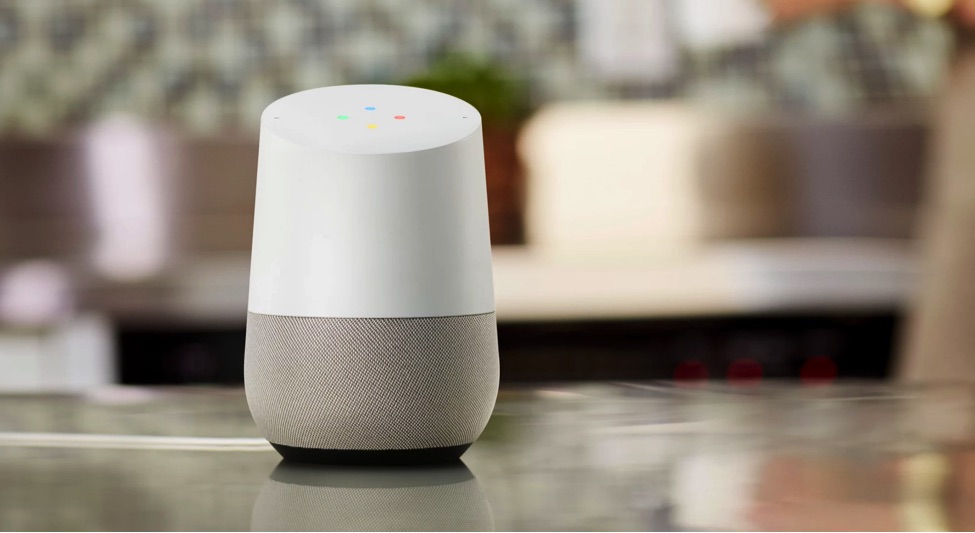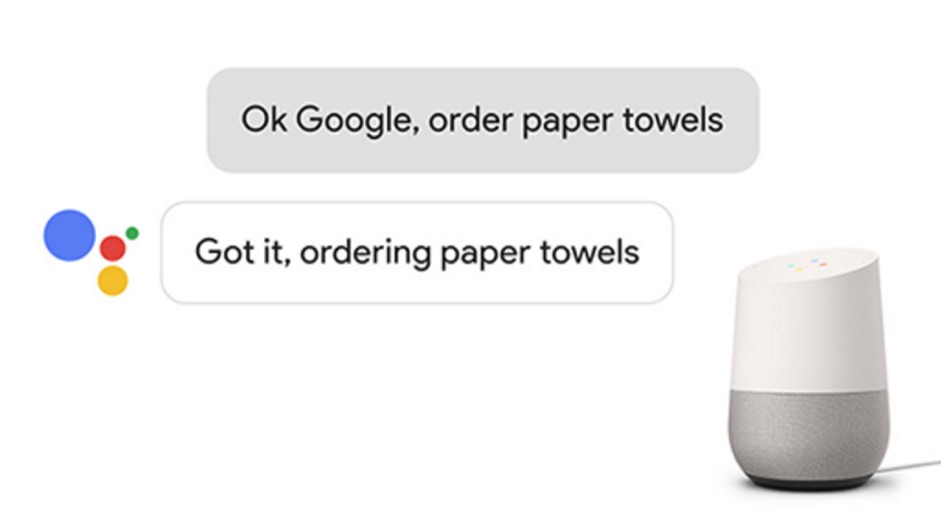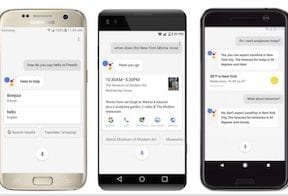My previous post, “10 Alexa Skills for Shopping (and Selling),” focused on Amazon’s voice assistant, Alexa, and the burgeoning number of third-party apps and APIs — “Skills” — for that technology. Amazon’s smart-speaker device, Echo, uses Alexa.
Google, meanwhile, has developed its own voice assistant, Google Assistant, and its own device, Google Home. I will address Google Home and its shopping features in this post.

Google has developed its own voice assistant, Google Assistant, and its own device, Google Home.
Configuring Google Home
Google Home currently supports shopping only for U.S.-based users, who can use voice to purchase products and services.
Google Home users must first complete an initial setup on the device’s mobile app before they can order products. This setup facilitates the following.
- Enable payments. Enter a credit card or debit card to link it to the Google Home account.
- Enter shipping address. Associate one or more shipping addresses with the user’s Google Home account. If more than one address is entered, one of them can be marked as the default address for ease of voice ordering.
- Grant access. Users with more than one Google Home device can configure the ones they will use for shopping by giving access to payment information.
- Multiple users. Often multiple users use a single Google Home device. The app can set up these users, and the device will recognize the voice of each user.
Shopping via Google Home
Google Home enables shopping via Google Express, the marketplace of popular retailers.
- Shopping lists. Users can create shopping lists and classify one of them as primary. Users can add items to the list using voice and then purchase those items using Google Express. Users can purchase the entire list in one step or, alternatively, purchase individual items, which are marked as purchased to avoid accidental reordering.
- Buy an item. Items can be ordered using voice by simply stating the item, such as “paper towels.” The device also gives the option of specifying the store from which to order. If the store is not specified as part of the voice command, then the item is ordered from the last store used by the user in Google Express.

Consumers can purchase items using voice by simply stating the item, such as “paper towels.”
- Tracking orders. Google Home allows customers to track their orders (via the shipping company) using voice.
Google Home has an app store, similar to Amazon Alexa Skills store. The difference is that Google Home apps are available by default on the device — Alexa users must first enable a Skill on the mobile app. A Google Home user only needs to use the predefined keyword or phrase for the app to start using it. The list of apps is growing, including shopping apps such as food items and travel bookings.
Google Home is partnering with brick-and-mortar retailers — examples are Sephora, Saks Fifth Avenue, and Home Depot — to check the local inventory of an item with a voice command. Amazon Alexa does not integrate with local stores in this manner.
The Google Home device is available for purchase in the United States, United Kingdom, Canada, Australia, France and Germany. (Shopping via Google Express is available in the U.S. only.) Google Home supports English (American, British, Canadian, and Australian), Canadian French, French, and German.
There is a limited list of stores on Google Express. Not every retailer, therefore, can benefit from Google Home currently. But as the capabilities mature and Google Home allows ordering from any store, the service could become more feasible for smaller retailers.




